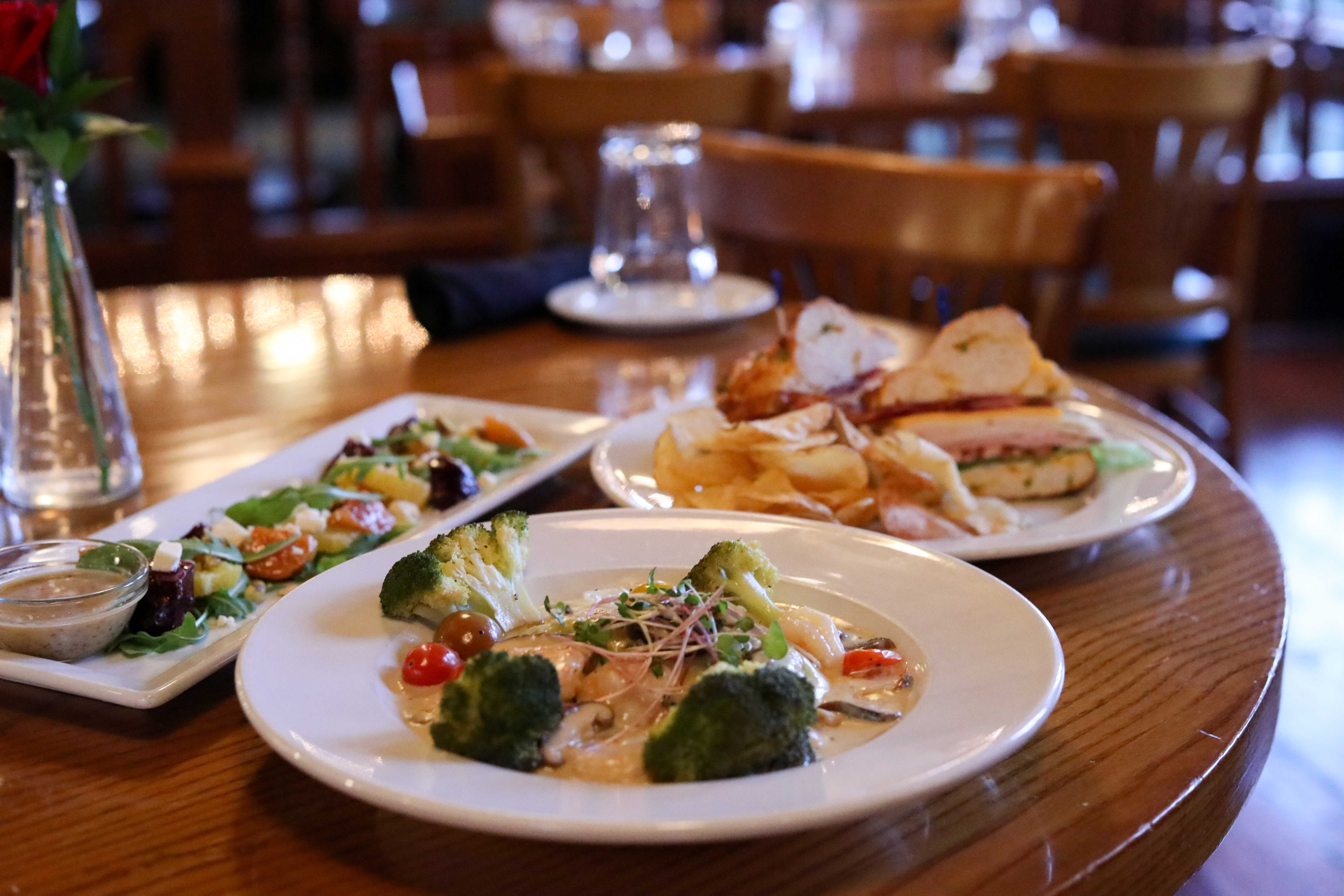In recent years, the farm-to-table movement has gained increasing popularity as consumers become more interested in knowing where their food comes from and how it is produced. Farm-to-table restaurants source their ingredients directly from local farmers, ensuring that their dishes are fresh, seasonal, and sustainable. In this comprehensive guide, we will explore the farm-to-table concept in detail, including case studies of successful farm-to-table models, trends in fine dining, the role of organic farming, and effective marketing strategies. Whether you are a chef, restaurateur, or simply a food enthusiast, this guide will provide you with valuable insights into the world of farm-to-table dining.
Case Studies of Successful Farm-to-Table Models
Many restaurants have found success with the farm-to-table model. Here are a few examples:
The French Laundry in Yountville, California, is one of the most celebrated restaurants in the world. Chef Thomas Keller sources his ingredients from local farms and purveyors, and his menu changes daily to reflect the freshest seasonal offerings. Read more about farm-to-table trends in fine dining.
Blue Hill at Stone Barns in Pocantico Hills, New York, is another world-renowned farm-to-table restaurant. Chef Dan Barber grows many of his own ingredients on the restaurant’s 80-acre farm, and his menu is inspired by the farm’s bounty. Read more about menu planning in farm-to-table cuisine.
These are just a few examples of the many successful farm-to-table restaurants around the world. These restaurants are proving that it is possible to create delicious, sustainable, and profitable dishes using locally sourced ingredients.
| Restaurant | Location | Chef |
|---|---|---|
| The French Laundry | Yountville, California | Thomas Keller |
| Blue Hill at Stone Barns | Pocantico Hills, New York | Dan Barber |
- The farm-to-table movement is growing in popularity.
- Farm-to-table restaurants offer many benefits, including fresher, more flavorful, and more sustainable dishes.
- If you are interested in learning more about farm-to-table dining, there are many resources available online.

Farm-to-Table Trends in Fine Dining
Fine dining restaurants are increasingly embracing the farm-to-table concept, offering diners a unique and unforgettable culinary experience. By sourcing ingredients directly from local farmers and producers, these restaurants are able to create dishes that are not only delicious but also sustainable and seasonal.
The Benefits of Farm-to-Table Dining
- Fresher, more flavorful ingredients: When ingredients are sourced locally, they are picked at the peak of ripeness and delivered to the restaurant within a short period of time. This results in dishes that are bursting with flavor.
- Support for local farmers: Farm-to-table restaurants help to support local farmers and businesses, which in turn benefits the community as a whole.
- Reduced environmental impact: By reducing the distance that food travels from farm to table, farm-to-table restaurants help to reduce greenhouse gas emissions.
| Restaurant | Location | Chef |
|---|---|---|
| The French Laundry | Yountville, California | Thomas Keller |
| Blue Hill at Stone Barns | Pocantico Hills, New York | Dan Barber |
Examples of Farm-to-Table Fine Dining Restaurants
Some of the most celebrated fine dining restaurants in the world are now embracing the farm-to-table concept. Here are a few examples:
- The French Laundry in Yountville, California, is one of the most renowned restaurants in the world. Chef Thomas Keller sources his ingredients from local farms and purveyors, and his menu changes daily to reflect the freshest seasonal offerings.
- Blue Hill at Stone Barns in Pocantico Hills, New York, is another world-renowned farm-to-table restaurant. Chef Dan Barber grows many of his own ingredients on the restaurant’s 80-acre farm, and his menu is inspired by the farm’s bounty.

The Role of Organic Farming in Farm-to-Table
Organic Farming Practices
Organic farming is a method of agriculture that emphasizes the use of natural and sustainable practices to grow crops and raise livestock. Organic farmers use natural fertilizers and pest control methods, and they avoid the use of synthetic chemicals and genetically modified organisms (GMOs). Organic farming is often seen as a more environmentally friendly and sustainable way to produce food than conventional farming methods.
- Farm-to-table restaurants are increasingly using organic ingredients in their dishes.
- Organic farming can help to reduce the environmental impact of food production.
- Sourcing organic ingredients locally can help to support local farmers and businesses.
Benefits of Organic Farming for Farm-to-Table Restaurants
There are many benefits to using organic ingredients in farm-to-table restaurants. Organic ingredients are often more flavorful and nutritious than conventionally grown ingredients. They are also free of synthetic chemicals and GMOs, which can be harmful to human health and the environment.
| Benefit | Explanation |
|---|---|
| Improved flavor and nutrition | Organic ingredients are often more flavorful and nutritious than conventionally grown ingredients. |
| Reduced environmental impact | Organic farming can help to reduce the environmental impact of food production. |
| Support for local farmers and businesses | Sourcing organic ingredients locally can help to support local farmers and businesses. |

Farm-to-Table Marketing Strategies
Marketing your farm-to-table restaurant is essential to attracting new customers and building a loyal following. Here are a few effective marketing strategies to consider:
- Create a strong brand identity: Your brand identity should reflect the values of your restaurant, including your commitment to using fresh, local ingredients. Use consistent branding across all of your marketing materials, from your website to your social media pages.
- Develop a compelling website: Your website is a key marketing tool, so make sure it is well-designed and easy to navigate. Include information about your menu, your commitment to sustainability, and your team of chefs.
- Use social media to connect with customers: Social media is a great way to connect with potential customers and build a community around your restaurant. Share photos of your dishes, post updates about your menu, and run contests and giveaways.
- Partner with local businesses: Partnering with local businesses can help you reach a wider audience. For example, you could team up with a local farm to offer farm tours or cooking classes.
| Marketing Strategy | Description |
|---|---|
| Create a strong brand identity | Your brand identity should reflect the values of your restaurant, including your commitment to using fresh, local ingredients. |
| Develop a compelling website | Your website is a key marketing tool, so make sure it is well-designed and easy to navigate. |
| Use social media to connect with customers | Social media is a great way to connect with potential customers and build a community around your restaurant. |
| Partner with local businesses | Partnering with local businesses can help you reach a wider audience. |
By implementing these marketing strategies, you can attract new customers and build a loyal following for your farm-to-table restaurant.
- Case Studies of Successful Farm-to-Table Models
- Farm-to-Table Trends in Fine Dining
- Farm-to-Table Baking and Desserts

Final Thought
The farm-to-table movement is a growing trend that is changing the way we eat. By sourcing ingredients directly from local farmers, restaurants can offer their customers fresher, more flavorful, and more sustainable dishes. As consumers become more aware of the benefits of farm-to-table dining, we can expect to see this trend continue to grow in popularity. If you are interested in learning more about farm-to-table dining, we encourage you to visit our website at bigtobokki.vn. We offer a variety of resources on this topic, including recipes, tips, and a directory of farm-to-table restaurants.




